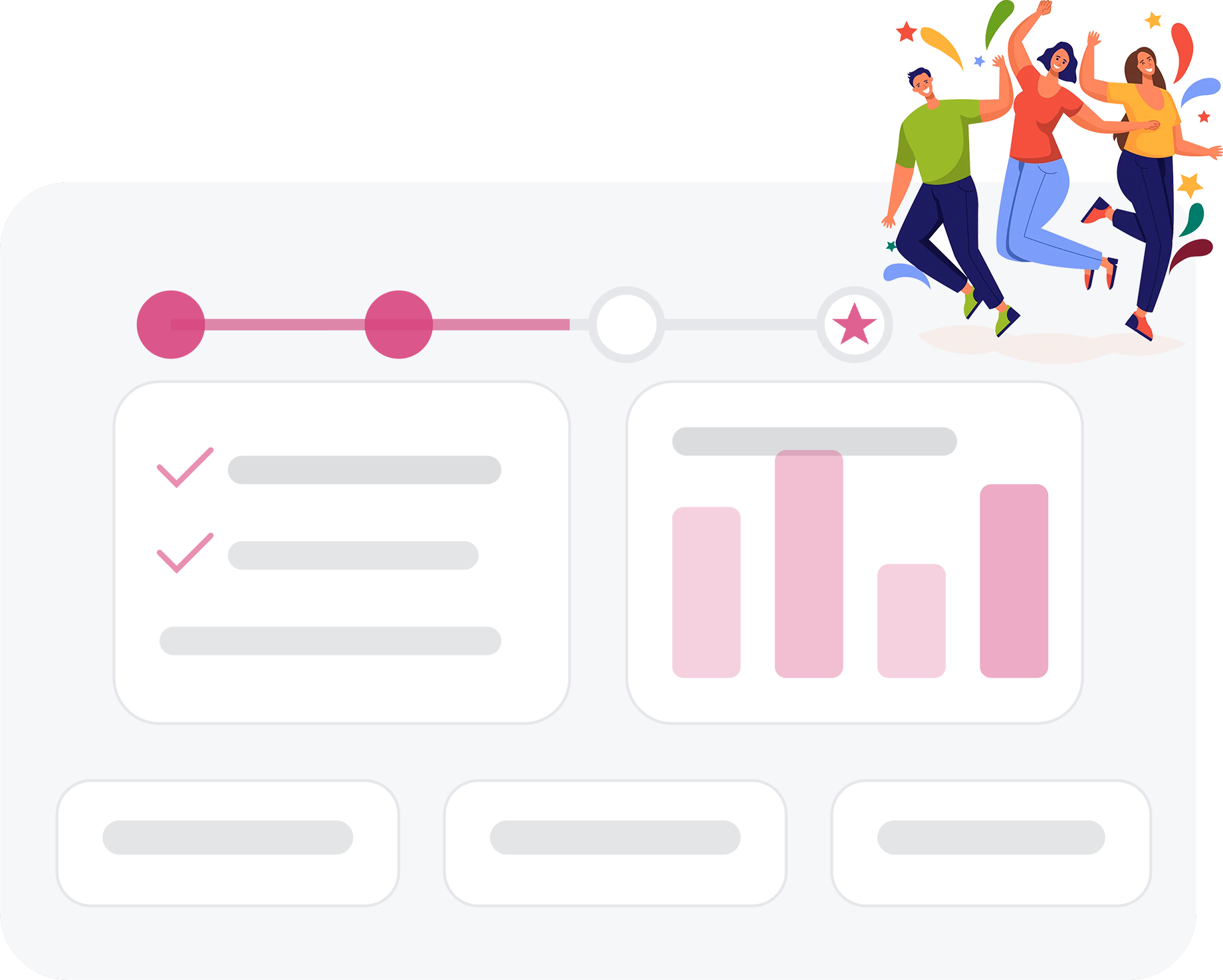How to create Impactful Learning Journeys?
Creating impactful learning journeys for employees involves a strategic approach that begins with understanding the specific needs of both the organization and its workforce. Start by conducting a thorough needs analysis to identify skill gaps and align learning objectives with business goals. Clearly defined objectives ensure that the learning journey is focused and relevant, setting the foundation for success.
Next, design the learning journey by curating diverse content from various sources and integrating it into a cohesive program. Use a mix of e-learning, hands-on training, and collaborative activities to cater to different learning styles. Incorporate elements like gamification and AI-powered tools to enhance engagement and personalize the experience, ensuring that the content resonates with employees and motivates them to participate actively.
Finally, continuously monitor progress and provide regular feedback to keep employees on track. Utilize data analytics to measure the effectiveness of the learning journey and make necessary adjustments. Implement a certification process to recognize achievements, and maintain momentum by updating content and communication strategies regularly. This comprehensive approach ensures that the learning journey not only develops employees’ skills but also drives tangible business outcomes.
What is a Learning Journey?
A learning journey is a structured process designed to guide an individual’s learning experience over a certain period of time. It usually refers to a planned sequence of learning activities and experiences, organized to facilitate progressive skill or knowledge acquisition. The goal of a learning journey is to improve the learner’s competencies, skills, or understanding in a specific area or topic.
What is a good learning journey?
A good learning journey for employees in a company is designed to ensure their continuous growth, development, and alignment with the organization’s goals and objectives. It should cater to individual needs while promoting a collective culture of learning and innovation.
Here are some general models for different contexts for effective continuous growth and learning & development pathways:
- Orientation and Onboarding:
- Introduction to company culture, values, and mission.
- Overview of the company’s products, services, and internal systems.
- Training on necessary tools and software.
- Meeting team members and understanding team dynamics.
- Baseline Skill Assessment:
- Identify current skills and knowledge levels.
- Highlight gaps or areas for improvement.
- Personalized Learning Pathways:
- Based on the baseline assessment, design individual learning paths.
- Use a mix of online courses, workshops, seminars, and hands-on training.
- Incorporate a blend of hard (technical) and soft (communication, leadership) skills training.
- Mentorship and Coaching:
- Assign mentors to provide guidance and share experiences.
- Encourage reverse mentoring where younger employees teach senior members about newer tools or methods.
- Utilize external coaches for specialized training or leadership development.
- Cross-functional Training:
- Encourage employees to learn about functions outside their primary role.
- Facilitates better team collaboration and breaks down silos.
- Can lead to innovative ideas when diverse skill sets interact.
- Feedback and Evaluation:
- Regular performance reviews to gauge progress.
- Instant feedback tools or platforms.
- Employee self-assessment and peer reviews.
- Professional Development Opportunities:
- Encourage attending conferences, workshops, and seminars.
- Offer tuition reimbursement or sponsor certifications.
- Provide opportunities for project leadership or management training.
- Innovation and Creative Spaces:
- Set up platforms or events like hackathons or brainstorming sessions.
- Reward innovative ideas and solutions.
- Create an environment where failure is seen as a learning opportunity.
- Networking and Building Relationships:
- Encourage team building and bonding activities.
- Foster a culture where employees actively network internally and externally.
- Leadership Development:
- Identify potential leaders early on.
- Offer them specialized training, management courses, and opportunities to lead.
- Continuous Learning:
- Update training materials and courses regularly.
- Encourage employees to keep up with industry trends.
- Provide access to e-learning platforms, journals, and books.
- Reevaluation and Adaptation:
- Periodically reassess the learning journey’s effectiveness.
- Adapt based on new business needs, employee feedback, and industry changes.
Lastly, remember to incorporate recognition and rewards into the learning journey. Celebrate milestones and achievements. Recognize employees who display a commitment to continuous learning and growth. This will not only motivate them but also inspire others in the organization.
Don’t forget that you can use our Gamification Engine to do that!
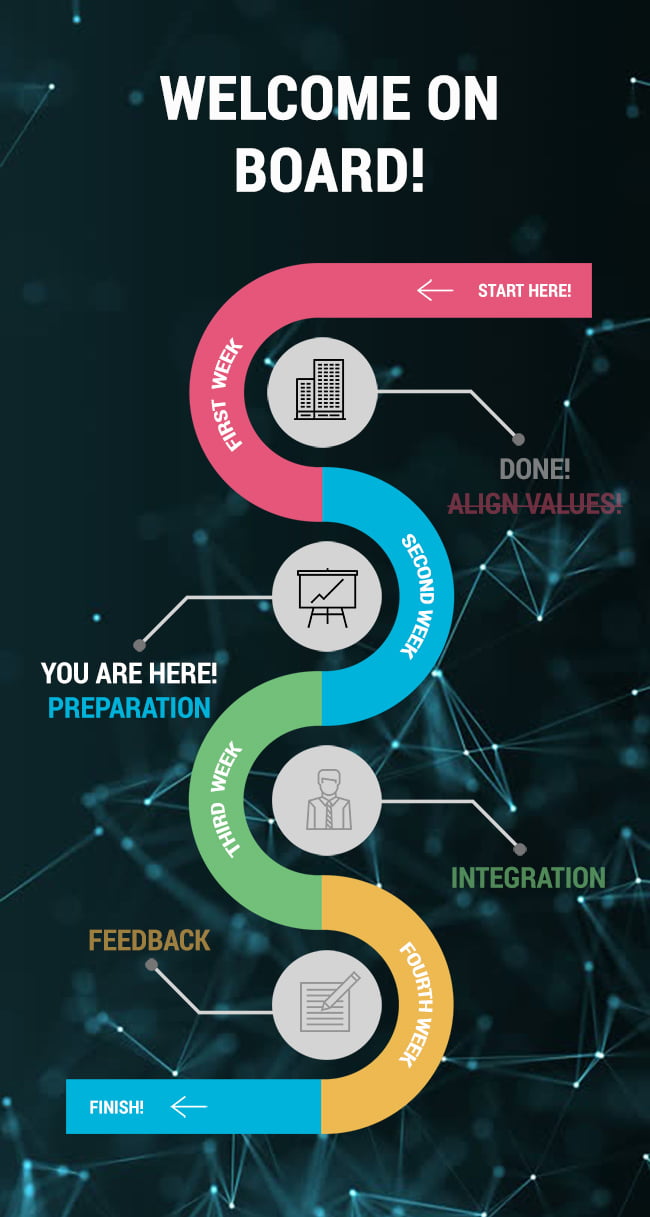
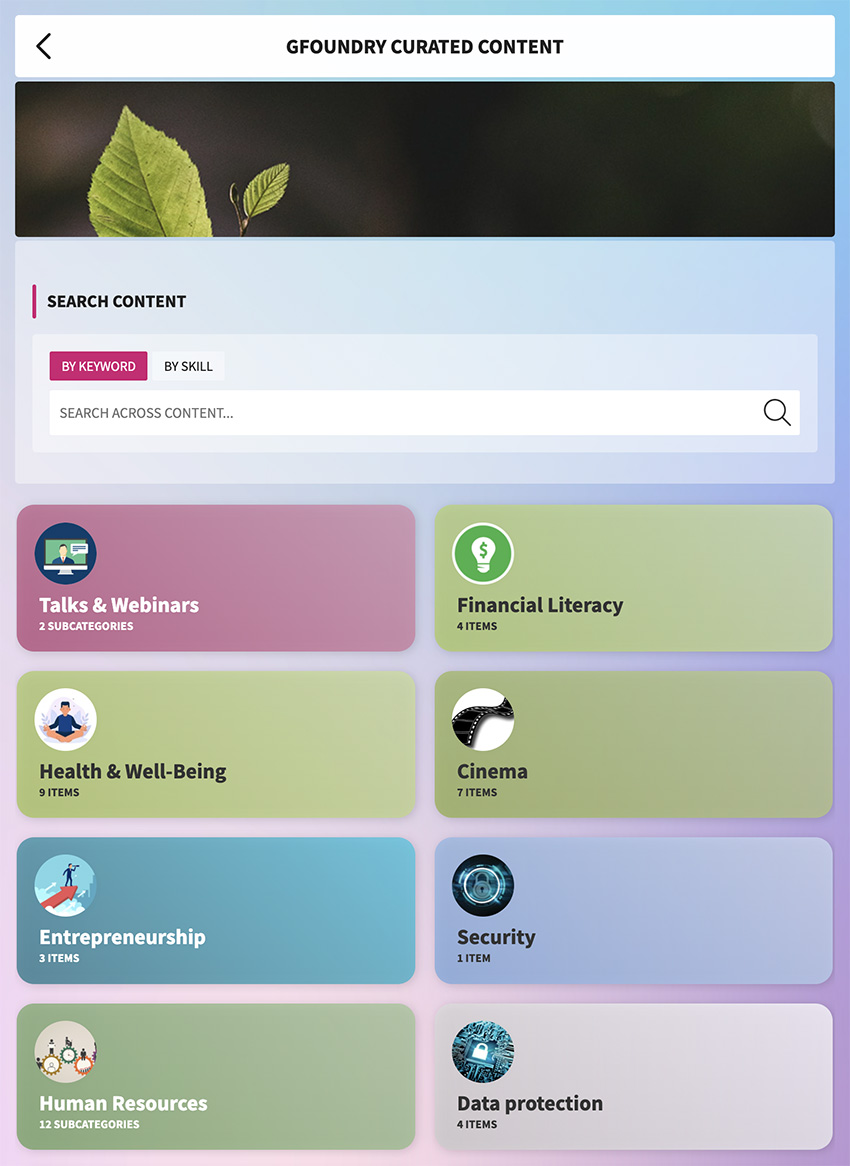

How do I start a learning journey?
1. Strong and valuable content
The foundation of any Learning Journey for an employee is having access to knowledge that complements and enriches everything they already know. If this is not the case, the employee will quickly lose interest with the content they have available, not retaining any added value.
In addition to powerful content, this must also be adapted to each person. One of the bases of Performance Evaluation in a company is the ability to understand not only the competencies of the organisation and its teams, but also to understand what knowledge weaknesses may exist. Therefore, it is important to evaluate the training needs of each employee, each team or even the organisation as a whole.
It is therefore essential that these journeys are personalised to the needs of each individual, ensuring that all weaknesses are covered appropriately.
At GFoundry, besides being able to customize the Learning Journey of the employees, you can also have access to curated content made available by us in several areas, from Health and Wellness, through essential Soft Skills such as Time Management and Resilience, as well as content of General Culture. These contents are made available free of charge to all our clients and can be made available to their teams at any time.
2. Integrating content from different sources
Over the years, the training content is no longer centralized in a physical space, such as a training room, but spread across multiple locations on the internet, accessible in different ways.
One of the biggest challenges in managing people and, more specifically, in managing your training is the agility to aggregate content from various sources that are important for your teams.
Since content is scattered across multiple platforms, it can be confusing for anyone to have to navigate through multiple links until they get to the end of a Training plan.
In addition to all the content that you can add directly on the platform, with GFoundry you can create Learning Journeys that include not only these added contents, but also external sources such as Google Academy, Coursera, Udemy, Youtube, Vimeo, Slideshare, Sharepoint among many others. GFoundry can act as a top layer that encompasses everything that is part of each employee’s Journey, making their experience much more fluid and simple to fulfill.


3. Monitor and Certify!
A very important part of creating a Learning Journey is to understand how effective it is in transmitting knowledge. Therefore, it is essential to be able to define metrics to better understand what has been the performance of employees in the training, how many hours they spent and even what has been their feedback regarding the contents.
Moreover, at the end of a Learning Journey, it is crucial to be able to certify all the people that have successfully completed all their training, representing an official recognition of their knowledge acquisition and their effort during the process.
With the GFoundry platform, all this is possible in a simple and dynamic way. Firstly, you can monitor crucial information about people’s training through reports available both in dashboards and xlsx files.
In addition, you can also certify all employees who complete your Learning Journeys, adding relevant information to these certificates, such as their name, the date on which the training ended, the hours used and even their final score. These certificates are available in each employee’s profile and they can be shared on their LinkedIn profile.
4. Communication Plan
For any area of an organisation, internal communication is one of the key pillars to get a specific message across to people effectively. Therefore, with regard to Training Plans, it is also important to be able to communicate succinctly and clearly to everyone that it is important to use the tools available to improve their skills and knowledge.
GFoundry is a fundamental piece for the internal communication of any organisation. Firstly, the fact that it is a digital solution allows all employees to have access to a mobile application where they can be in direct contact with your company. This direct contact is not only related to their work goals and linked to their functions, but also has other very important aspects.
On the platform’s homepage, employees have access to a news area, where the company can share important messages, but they can also use push notifications to pass a shorter and more direct message to everyone or to a specific group of people.
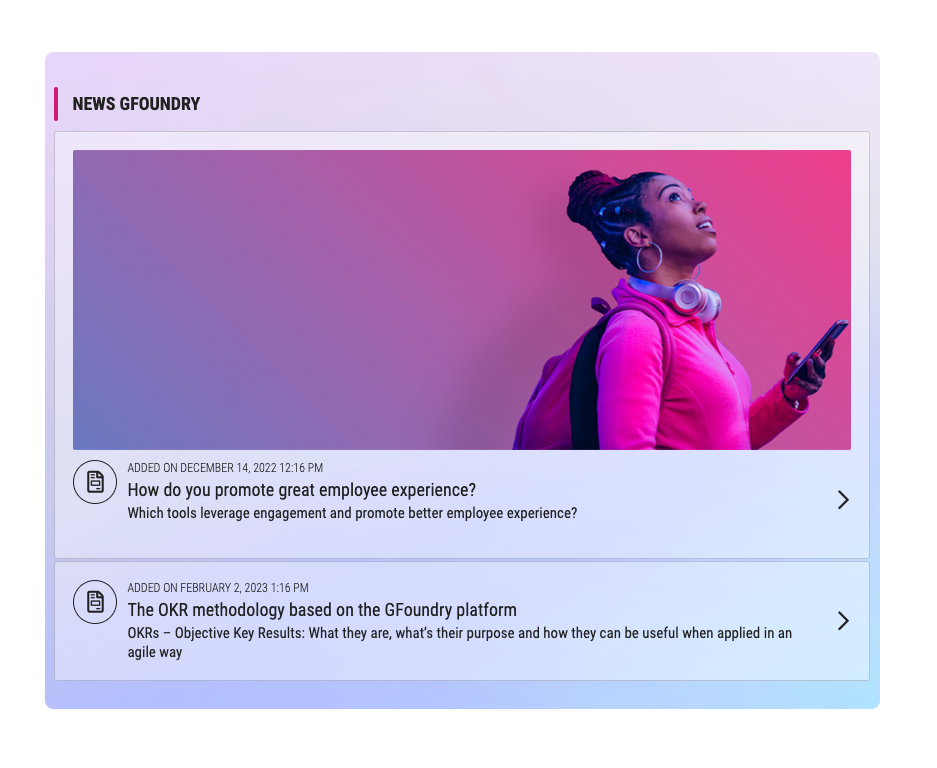
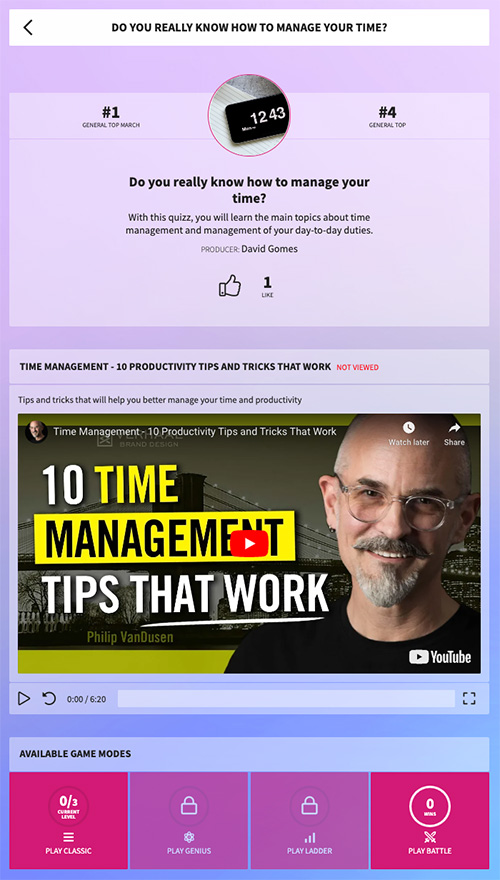
5. Have a good platform!
With technological evolution, and the inevitable digitalisation of Human Resources, employees should have access to tools that allow them to access your company’s content in a simple, agile and impactful way for their performance.
For this reason, GFoundry is an ideal partner to implement a project to create Learning Journeys for your employees, whether they are seniors or people who have just joined the organisation.
GFoundry works as a multi-platform solution (Web, Android and iOS), which supports all the actions directly related to Talent Management in an organisation, from attracting and recruiting people, through their integration and development to their departure, providing a rich experience in impactful moments for their performance.
Finally, through a Gamification Engine, which allows you to create game and reward dynamics through multiple user actions and achievements, you can make these paths much more interactive and interesting for any employee, directly impacting their results and, consequently, those of your organisation.
Know more about GFoundry’s Talent Management Solutions here.
Employee Learning Journey Map examples by Job Function
| Function | Steps in the Learning Journey |
|---|---|
| Human Resources Management | 1. Participate in a course on labor law (Training Module). 2. Complete a form for organizational climate assessment (Surveys Module). 3. Create an individual development plan (Career Management Module). 4. Attend a session on diversity and inclusion (Training Module). 5. Set talent retention goals (Goals Module). 6. Conduct a well-being survey (Engagement Thermometer Module). 7. Participate in an onboarding meeting (Tasks Module). 8. Set up an exit interview checklist (Tasks Module). 9. Provide feedback on inclusion practices (Feedback Module). 10. Compete in a gamified challenge on conflict management (Competitions Module). |
| Finance and Accounting | 1. Participate in a course on IFRS standards (Training Module). 2. Complete an internal audit checklist (Tasks Module). 3. Analyze financial reports (Goals Module). 4. Attend a session on taxation (Training Module). 5. Participate in a budget planning meeting (Tasks Module). 6. Conduct a survey on financial practices (Surveys Module). 7. Set cash flow optimization goals (Goals Module). 8. Participate in a financial analysis competition (Competitions Module). 9. Provide feedback on the audit process (Feedback Module). 10. Perform a comparative analysis of financial performance (Comparisons Module). |
| Operations | 1. Participate in a course on Lean methodologies (Training Module). 2. Create a checklist for process optimization (Tasks Module). 3. Analyze operational performance indicators (Goals Module). 4. Attend a session on supply chain management (Training Module). 5. Set continuous improvement goals (Goals Module). 6. Conduct an operational efficiency survey (Surveys Module). 7. Participate in an operations innovation workshop (Innovation Module). 8. Compete in a productivity efficiency competition (Competitions Module). 9. Provide feedback on new processes implemented (Feedback Module). 10. Perform a comparative analysis of operational KPIs (Comparisons Module). |
| Sales and Marketing | 1. Participate in a course on sales techniques (Training Module). 2. Complete a checklist for marketing campaigns (Tasks Module). 3. Set quarterly sales goals (Goals Module). 4. Attend a session on consumer behavior (Training Module). 5. Analyze campaign performance metrics (Goals Module). 6. Conduct a customer satisfaction survey (Surveys Module). 7. Participate in a product innovation brainstorming session (Innovation Module). 8. Compete in a sales simulation (Competitions Module). 9. Provide feedback on marketing campaign effectiveness (Feedback Module). 10. Compare campaign performance with industry benchmarks (Comparisons Module). |
| Information Technology | 1. Participate in a course on cybersecurity (Training Module). 2. Create an incident management checklist (Tasks Module). 3. Set system uptime goals (Goals Module). 4. Attend a session on emerging technologies (Training Module). 5. Analyze IT performance metrics (Goals Module). 6. Conduct an internal user satisfaction survey (Surveys Module). 7. Participate in an IT innovation session (Innovation Module). 8. Compete in a technical problem-solving challenge (Competitions Module). 9. Provide feedback on the effectiveness of IT solutions (Feedback Module). 10. Perform a comparative analysis of infrastructure performance (Comparisons Module). |
| Project Management | 1. Participate in a course on agile methodologies (Training Module). 2. Create a project initiation checklist (Tasks Module). 3. Set project delivery goals (Goals Module). 4. Attend a session on risk management in projects (Training Module). 5. Analyze success metrics from previous projects (Goals Module). 6. Conduct a stakeholder satisfaction survey (Surveys Module). 7. Participate in a project management innovation session (Innovation Module). 8. Compete in a crisis management simulation (Competitions Module). 9. Provide feedback on project execution (Feedback Module). 10. Perform a comparative analysis of project management methodologies (Comparisons Module). |
| Product Development/Innovation | 1. Participate in a course on design thinking (Training Module). 2. Create a checklist for new product development (Tasks Module). 3. Set product innovation goals (Goals Module). 4. Attend a session on research and development (Training Module). 5. Analyze success metrics from past innovations (Goals Module). 6. Conduct a survey on new product acceptance (Surveys Module). 7. Participate in a new product ideation session (Innovation Module). 8. Compete in an innovation marathon (Competitions Module). 9. Provide feedback on the product development process (Feedback Module). 10. Perform a comparative analysis of sector innovation (Comparisons Module). |
| Customer Support | 1. Participate in a course on customer service (Training Module). 2. Create a checklist for ticket resolution (Tasks Module). 3. Set customer satisfaction goals (Goals Module). 4. Attend a session on complaint management (Training Module). 5. Analyze response time metrics (Goals Module). 6. Conduct a customer satisfaction survey (Surveys Module). 7. Participate in a customer service innovation session (Innovation Module). 8. Compete in a customer service simulation (Competitions Module). 9. Provide feedback on customer support efficiency (Feedback Module). 10. Perform a comparative analysis of support performance (Comparisons Module). |
| Risk Management and Compliance | 1. Participate in a course on compliance and regulations (Training Module). 2. Create a compliance audit checklist (Tasks Module). 3. Set risk mitigation goals (Goals Module). 4. Attend a session on corporate risk management (Training Module). 5. Analyze compliance metrics (Goals Module). 6. Conduct a risk assessment survey (Surveys Module). 7. Participate in a risk management innovation session (Innovation Module). 8. Compete in a compliance challenge (Competitions Module). 9. Provide feedback on the compliance program (Feedback Module). 10. Perform a comparative analysis of industry risks (Comparisons Module). |
| Legal | 1. Participate in a course on applicable legislation (Training Module). 2. Create a checklist for contract review (Tasks Module). 3. Set legal compliance goals (Goals Module). 4. Attend a session on ethics and compliance (Training Module). 5. Analyze litigation metrics (Goals Module). 6. Conduct a legal risk assessment survey (Surveys Module). 7. Participate in a legal practices innovation session (Innovation Module). 8. Compete in a legal case simulation (Competitions Module). 9. Provide feedback on internal legal procedures (Feedback Module). 10. Perform a comparative analysis of legal compliance (Comparisons Module). |
10 Reasons why a simple e-learning software might not provide a good experience for a modern and impactful learning journey:
- Lack of Personalization: Modern learners often expect content that caters to their individual needs and learning styles. A basic e-learning platform may offer one-size-fits-all content, which doesn’t address the diverse needs of learners.
- Limited Engagement Tools: Simple e-learning software might lack interactive tools, gamification, and multimedia elements that can make learning more engaging and fun.
- No Collaboration Features: Modern learning often emphasizes collaboration and group activities. Without features like discussion boards, group projects, or peer reviews, learners might miss out on valuable collaborative experiences.
- Inflexible Content Delivery: Today’s learners might prefer a mix of formats, from videos to podcasts to interactive simulations. Basic software might only offer text-based modules.
- Absence of Real-time Feedback: Immediate feedback can be crucial in the learning process. If the platform only provides end-of-module tests without real-time responses, it might hinder the learning experience.
- Lack of Integration with Other Tools: Modern learning often requires integration with other software, like video conferencing tools, project management apps, or external resources. A simplistic platform might not support these integrations.
- No Adaptive Learning: Adaptive learning adjusts content based on the learner’s performance and needs. Basic e-learning platforms might not have this capability, making the learning experience static and linear.
- Updates and Scalability: Simple e-learning platforms might not be easily scalable or updatable, making it hard to adapt to new educational methodologies or accommodate growing numbers of learners.
- Limited Analytics and Reporting: Comprehensive data on learner performance and course engagement is vital for continuous improvement. Basic platforms might offer only rudimentary tracking, lacking in-depth insights.
- Mobile Learning Constraints: With the rise of mobile learning, it’s essential that platforms are mobile-friendly or have dedicated apps. Simple software might not cater to this, limiting access for learners on the go.
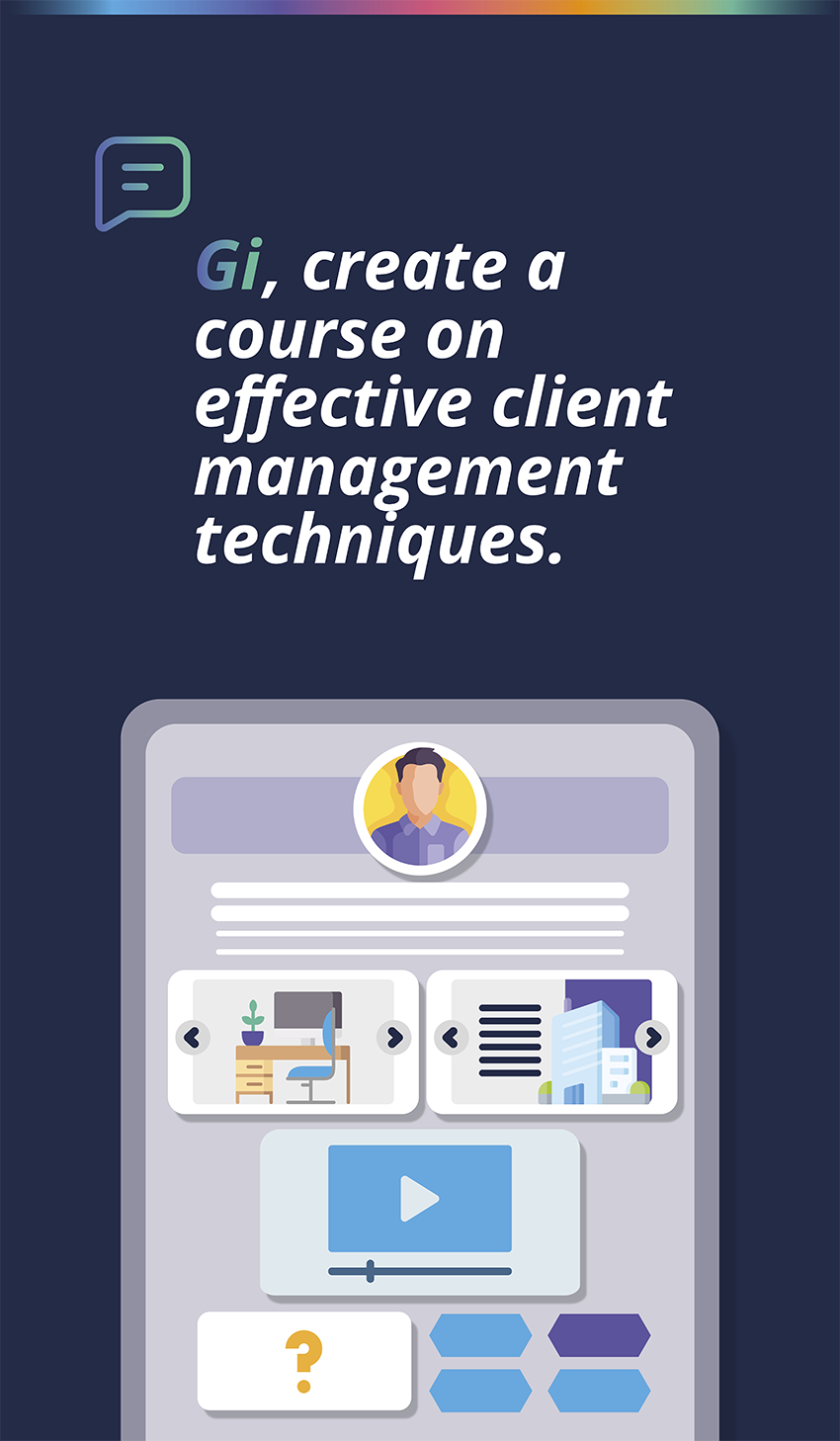 FAQS
FAQS
What makes GFoundry different from other traditional e-Learning tools?
Above all, what distinguishes GFoundry from other e-Learning tools is the final experience achieved with the dynamics that can be created with the different micro-learning formats and with the use of Gamification dynamics, which introduce much higher interactivity that leads – in the majority of cases – to much higher results in an organisation.
Moreover, we believe that a learning journey does not have to consist only of training moments, with presentation of contents in different formats, but also be enriched with feedback stages, interaction between peers, moments of knowledge assessment, definition of individual development plans, among others.
What kind of content can I insert in GFoundry?
The GFoundry platform allows the insertion of quizzes in 4 different game modes – including the battle mode, in which the users play against each other, PDF documents, Videos, Podcasts and HTML Content.
The GFoundry platform also allows the integration and incorporation of content from other platforms or even a more integrated management of actions from other LMS. Click here to learn more.
Who can create training content?
Training content can be easily created by the client manually or using our AI assistant (Gi) or created with the help of the Partner associated with the project, being responsible for content creation and all the management of strategic consulting dynamics, monitoring, among other tasks. Click here to learn more about our Partners.
Is there any content already made, ready to use?
Yes, the client has access – 100% free of charge – to a series of contents curated by GFoundry, in various areas of knowledge, such as: Communication, Time Management, Empathy, Feedback, Design Thinking, Creativity and Innovation, Management, Collaboration, Marketing and Sales, Health and Well-being, Resilience, Productivity, Data Protection – among many other examples. Read more here: GFoundry Curated Content applied to Learning and Development
How much does it cost to produce content for GFoundry?
The cost will depend on the complexity and volume of content to be created, but on average, the costs involved are much lower than the ones for a traditional e-Learning platform. If the client uses our AI assistant (Gi), content production is completely free, fast and agile.
Can Individual Development Plans (IDPs) be managed with this solution?
Of course. Identifying learning needs (collective and individual) and managing them is a fundamental process in the development of people in an organisation. Normally this information is obtained at moments of assessment and feedback and is then managed in a
Who can help us think about and implement such a system?
Consulting services and implementation of a GFoundry project are included in any project and are fundamental for its success.
The maturity and experience that GFoundry has achieved throughout its existence means that we position ourselves in the market with an indirect business model, always associated with a Partner in the construction of the solutions we present.
GFoundry realized that it cannot be alone when it comes to strategy, assessment, consulting, gamification design and monitoring of our customers.
For this reason, we always associate a Partner to each project we start with a client, chosen for their expertise in the area to be developed, with a package of hours already included in the annual licence fee. Click here to know more about our Partners.
What is Gi and how does it enhance the GFoundry platform?
Gi is GFoundry’s AI assistant designed to help clients create high-quality training content. With Gi, users can generate customized learning materials using AI, making the content creation process more efficient and tailored to the specific needs of their organization.
Can Gi integrate with existing content?
Yes, Gi can seamlessly integrate with existing content on the GFoundry platform, allowing for an enriched learning experience that combines AI-generated materials with pre-existing resources.
What types of learning content can Gi create?
Gi can create a variety of learning content, including quizzes, interactive modules, video scripts, and more. This flexibility ensures that the training materials are engaging and effective for learners.
Subscribe to GFoundry Newsletter: Weekly Insights on HR’s Most Pressing Topics
Keep on reading:
Ready to get started?
Take the next step and learn more about how GFoundry can help you.
